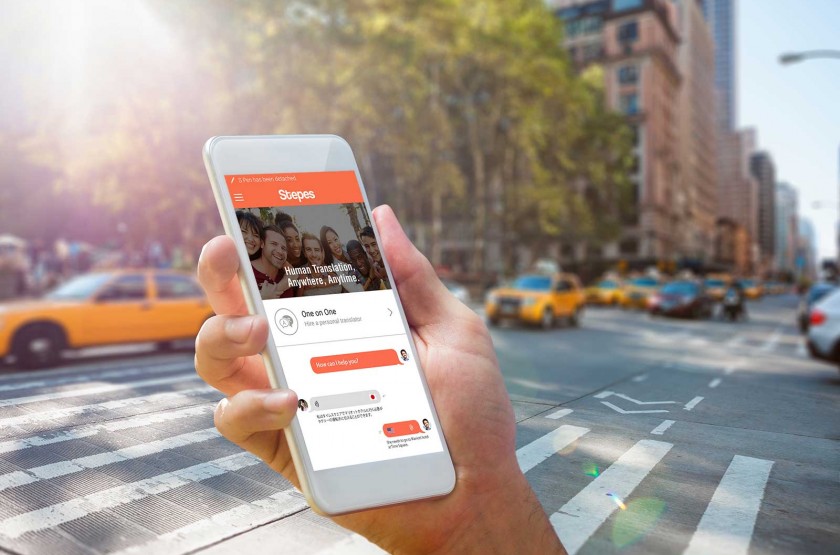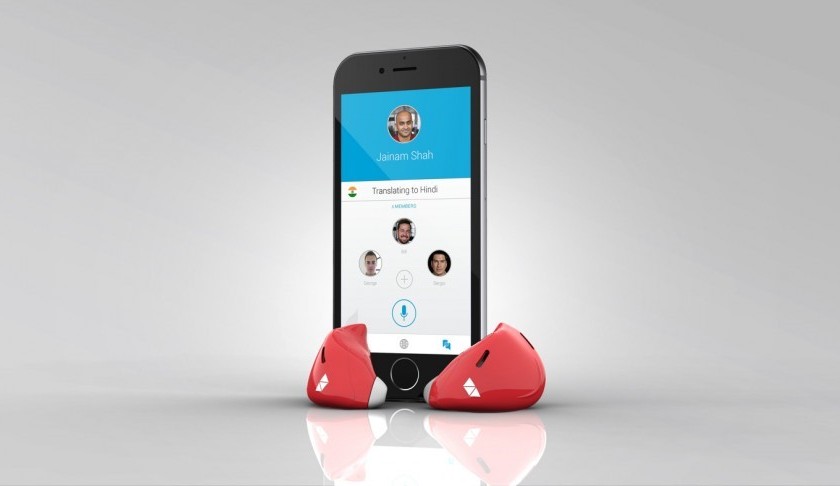Mobile Translation for a Mobile Society
- Lizzy Broek
- September 19, 2018
- 112,402 views

Currently there are 7.6 billion people living on this planet, and approximately 4.5 billion of those use a mobile phone. A smartphone has the ability to enrich life in many ways, such as having a vast amount of knowledge available at one’s fingertips. Mobile devices have become so inexorably connected to our lives that, slowly but surely, more functions are transferring from more traditional devices to our mobile devices. Smartphones haven´t even been on the market for 20 years, making the innovation process swift and steep. Communication has also become much easier since smartphones have been added to our lives. Messages can now be sent all over the world in a matter of seconds. There is often little need for elaborate emails, a simple app message will suffice while being much faster and more efficient. Smartphone communication adds a level of connectedness to our lives, connecting people across borders and cultures with language being one of the few true obstacles. While English is a language many people are able to converse in, there are just as many or more who do not speak it. Google Translate is very good at translating words or sentences, but is not able to carry over any emotion or meaning behind a text. Now that we have all these possibilities at our fingertips, what does this mean for the translation industry?
Mobile translation powered by human translators has only recently emerged as new technology. Traditionally, companies would submit hundreds and thousands of words at any one time to be translated by professional translation agencies using the waterfall development model, however this is rapidly changing as companies embrace agile and iterative development methodology. The industry consensus is that document sizes are shrinking and most translation projects today are 500 words or less. It is quickly becoming a trend for companies to submit only a few words, maybe 50, for a swift and convenient translation. These occur more and more frequently, leading to a massive disruption in the translation industry. With this disruption translation agencies will need to be agile and able to react within minutes, something not always possible with traditional language service models and workflows. With the new Stepes update, tags have been incorporated into the app, allowing translators to quickly and conveniently keep the original layout and look of the document. This is beneficial for both translator and customer, as translated documents can be delivered much faster than traditional translations.
In many countries like Japan, Korea, China, and the Netherlands, having a smartphone is already an integral part of everyday life. In China, a smartphone is not only a means of communication, but also a way to speed up life. Take WeChat for example, it combines multiple apps into one. It can be used to chat, call, videocall, post pictures or stories on your moments, play games, and pay for purchases. China has a vast market for mobile devices, but more importantly mobile applications. As of July 2018, there are an estimated 770 million mobile internet users in China. It should also be noted that the Chinese mobile app market is very different from that in Europe or North America. While in Europe some apps will be localized, most of the apps will be offered in the original language, which is in most cases English. In China almost all apps are localized and finding an English app in the Chinese app store, like Galaxy Apps or Apple App Store is nearly impossible.
For the translation industry this means a plethora of things, potentially offering many exciting business opportunities. First, mobile devices provide a versatile platform for very fast text and document translations. Secondly, the smartphone is naturally GPS enabled so it’s ideal to deliver location-based language interpretation and on-site translation services. Finally, millions of apps that have been published in English will need to be translated (or localized) before they can be utilized by users in the Chinese, Japanese, German, Spanish, and French markets, just to name a few.
The digital transformation makes it ever more important for companies to translate quickly changing business content like website updates and product documents. Mobile enabled translation services like Stepes allow professional translators to directly translate text using the mobile interface anywhere and anytime, making it possible to deliver on-demand translation services that are increasingly becoming the norm. The latest release of the Stepes translation app also supports translating document tags making the smartphone translation solutions even more powerful. More and more enterprises are continually creating business content, which means that at any given time a small amount of text (ranging from a couple dozen words to a few hundred words) needs to be translated. The translation industry is witnessing a paradigm shift in that small or even micro translation projects are becoming the norm. This trend is perfectly suited for translation solutions that incorporate the smartphone and its’ ability to perform on-the-go solutions.
As mentioned above, there are millions of commercial apps that businesses create for their customers which span a multitude of subjects. These apps all need to be translated or localized into different languages for companies to meet their international customer expectations. A mobile translation solution is ideally suited to translate the app interface strings simply because a mobile translator sees nearly identical displays of the content. In the case of the Stepes mobile translation app, linguists can also see the actual 3rd app interface live to get the full context information in order to achieve the highest level of translation accuracy. Stepes has developed customized solutions to dynamically replace an app’s language interface for real time linguistic and cosmetic testing.
Finally, the Uber model is ideal for today’s big language translation requirements where businesses increasingly need a variety of language services in addition to document translations. Mobile platforms, like Stepes, allow bilingual or multilingual subject matter experts to put their linguistic skills to work by taking advantage of the user’s location and instant chat (audio and video) for a variety of languages services such as on-site interpretations and real-time translations in a shared economy.
The mobile translation market is huge. Global enterprises are now realizing the necessity of translating their content, whether it is mobile apps, marketing content, or even software localization. Mobile translation is the future of translation, and companies like Stepes that take the initiative to modernize translation technology will stand to gain the most. With the most recent update to the app being released on the thirteenth of September, tags will be implemented, allowing translators to deliver work which traditionally had to be done on a computer from their mobile devices.











